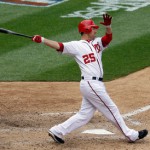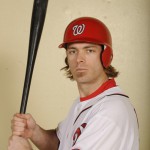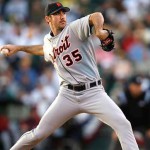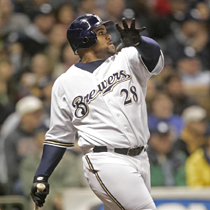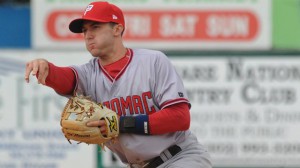In the wake of several posts I’ve seen on the topic of Qualifying Offers (one long-winded piece from the long-winded windbag Murray Chass here, accusing the owners of collusion in the cases of Stephen Drew and Kendrys Morales instead of just understanding the state of the game, another from the more reasonable Jayson Stark here, talking about some potential fixes, and their respective agent Scott Boras whining about anonymous executive quotes in an ESPN article here), I thought I’d do some quantitiative-summary analysis of the Q.O. so far.
I think its fairly inarguable to state that the system isn’t really working how the players envisioned; especially as two decent FAs still sit un-signed. Clearly the players union did not realize just how much teams are valuing draft picks, to the point where they’d rather keep a mid-first rounder than sign a decent middle-aged free agent. I also believe that several of the players this past off-season got *really* bad advice on the state of the market for their services, and wholy deserve their fates. Baseball is changing; we’re seeing metrics highlighting the value of defense, we’re seeing positional flexibility win out over inflexibility, and we’re seeing teams go with youth over veterans even when the cost difference is rather negligible. That middle-aged, defensively challenged free agents (especially Morales) didn’t see this is entirely on them. The situation is even worse for players of advancing years, who are not even getting contract offers after decent seasons and are being forced into early retirement in some cases.
Here’s part of a spreadsheet I put together, analyzing the eight guys who were faced with Q.O. decisions after the 2012 season:
| Year | Player | Old Team | New Team | Draft Pick Forfeited | Signing Date | Subsequent contract (w/o options) | Money up/down per AAV | Q.O. Screw the player? |
| 2012 | Josh Hamilton | TEX | LAA | 1-22 | 12/13/2012 | 5yrs/$125M | 11.7 | No |
| 2012 | Michael Bourn | ATL | CLE | 2sup-69 | 2/11/2013 | 4yrs/$48M | -1.3 | Sort of |
| 2012 | Kyle Lohse | STL | MIL | 1-17 | 3/25/2013 | 3yrs/$33M | -2.3 | Yes |
| 2012 | Adam LaRoche | WAS | WAS | none | 1/16/2012 | 2/$24 | -1.3 | Yes |
| 2012 | B.J. Upton | TB | ATL | 1-28 | 11/28/2012 | 5/$75.25M | 1.95 | No |
| 2012 | Hiroki Kuroda | NYY | NYY | none | 11/20/2012 | 1yr/$15M | 1.7 | No |
| 2012 | Rafael Soriano | NYY | WAS | 1-29 | 1/8/2013 | 2yr/$28M (lots deferred) | 0.7 | Sort of |
| 2012 | Nick Swisher | NYY | CLE | 2-43 | 12/23/2012 | 4yr/$56M | 0.7 | No |
Arguably, 3 of the 8 players in question were never going to be affected by the Q.O. (Hamilton and Upton because of the known long-term deals they were going to get, and Kuroda for being nearly guaranteed to return to the Yankees). So, by my way of thinking 4 of the remaining 5 players in the 2012 FA class had their earnings either curtailed or affected by the presence of the Q.O.:
- Michael Bourn got a longer deal with more guaranteed money, but he got less in AAV than the Q.O. he turned down, so perhaps my view is arguable that he was affected.
- Rafael Soriano languished on the FA market until the Nats suprisingly signed him; his AAV in “real” dollars was significantly less in its estimate per year than the Q.O. he turned down (most estimates i’ve seen are at $11M/year with all the deferred money in his deal). I hope Soriano keeps sending his agent Xmas cards; clearly Boras pulled a rabbit out of a hat to get him signed here.
- Adam LaRoche saw very little interest in his services and returned to the Nats on a discounted deal; meanwhile players with comparable skills but without compensation issues earned more years and more dollars. Shane Victorino; 3yrs/$39M as an example.
- Kyle Lohse probably suffered the worst fate; he didn’t sign until a week before the season and for more than a 15% discount per year. Meanwhile lesser pitcher Edwin Jackson got 4yrs/$52M by way of comparison, without a Q.O. attached to him.
Now here’s the same information for the thirteen players who dealt with (or who are dealing with) the issue after the 2013 season:
| Year | Player | Old Team | New Team | Draft Pick Forfeited | Signing Date | Subsequent contract (w/o options) | Money up/down per AAV | Q.O. Screw the player? |
| 2013 | Carlos Beltran | STL | NYY | 1sup-29 | 12/??/2013 | 3yrs/$45M | 0.9 | No |
| 2013 | Robinson Cano | NYY | SEA | 2-47 | 12/12/2013 | 10yrs/$240M | 9.9 | No |
| 2013 | Shin-Soo Choo | CIN | TEX | 1-22 | 12/??/2013 | 7yrs/$130M | 4.47 | No |
| 2013 | Nelson Cruz | TEX | BAL | 2-56 | 2/22/2014 | 1yr/$8M | -6.1 | Yes |
| 2013 | Stephen Drew | BOS | unsigned | ?? | unsigned | unsigned | Yes | |
| 2013 | Jacoby Ellsbury | BOS | NYY | 1sup-30 | 12/13/2013 | 7yrs/$153M | 7.76 | No |
| 2013 | Curtis Granderson | NYY | NYM | 2-51 | 12/??/13 | 4yrs/$60M | 0.9 | No |
| 2013 | Ubaldo Jimenez | CLE | BAL | 1-17 | 2/19/2014 | 4yrs/$50M | -1.6 | Yes |
| 2013 | Hiroki Kuroda | NYY | NYY | none | 12/6/2013 | 1yr/$16M | 1.9 | No |
| 2013 | Brian McCann | ATL | NYY | 1-18 | 12/3/2013 | 5yrs/$85M | 2.9 | No |
| 2013 | Kendrys Morales | SEA | unsigned | ?? | unsigned | unsigned | Yes | |
| 2013 | Mike Napoli | BOS | BOS | none | 12/12/2013 | 2yrs/$32M | 1.9 | No |
| 2013 | Ervin Santana | KC | ATL | 1-29 | 3/12/2014 | 1yr/$14.1M | 0 | Yes |
Similarly to 2012, there were several FAs in this class for whom the Q.O. meant nothing: Cano, Choo, Ellsbury, McCann and Kuroda. So, by my way of thinking 5 of the remaining 8 players had their contracts impacted … but two in a much more visible way:
- Drew and Morales remain unsigned to this point … and its hard to envision a scenario right now where any team would sign these players until after the Rule 4 draft in early June. Why give up a draft pick at this point? On the bright side for both players, there may be a veritable bidding war for their services after the draft, and they could get decent contracts which have (by rule) no further draft pick compensation issues.
- Nelson Cruz had to take a $6M pay-cut due to his not taking the Q.O., a serious miscalculation of his market by him and his agent.
- You may argue whether or not Ubaldo Jimenez really got screwed here, since he got $50M guaranteed in a four year deal. But his AAV is a good 10% less than the Q.O. that he spurned form Cleveland.
- You can also argue about Ervin Santana, who signed for *exactly* the Q.O. amount once Atlanta lost most of their rotation for the year. I still say he was impacted because of the amount of time it took and his subsequent service time loss to start the season.
If i’m a future veteran FA … i’d be rather worried.
So, what’s the fix? Some say that this situation will naturally just take care of itself; next off-season maybe some players will finally take the Q.O. (remember; we’ve yet to have a single player take the offer), which in turn should make some teams wary of offering them in subsequent years. But by the time this situation naturally plays itself out, it’ll be time for the next bargaining session.
I think the MLBPA needs to (in the next bargaining session) cut the cord on the link between draft picks and free agent compensation once and for all. The entire reason draft pick compensation was invented was to “help” the little guys who lost free agents to the big teams. But look at the list of the teams who are generally offering Q.O.’s to players right now: 6 of the 21 total offer’d players were from the Yankees, another 3 from Boston. Those aren’t exactly teams “in need” of being given more picks in the draft. In fact, of the 21 players who have gone through this system, by my count just THREE played for a team that I’d qualify as a “small market” (Upton from Tampa Bay, Jimenez from Cleveland and Santana from Kansas City). Every other player plays for either a major market or a successful team in a mid-sized market. How is this system “working” as per its original intent, at all??
Maybe the right way of doing things is to punish the big teams for signing FAs … but don’t allow them to “game” the system by subsequently gaining more picks back. The Yankees signed four Q.O. affected free agents this past off-season … but only really lost one draft pick thanks to them having offered up and received their own compensatory picks for the players they knew they were going to lose anyway. Why aren’t the Yankees being forced to lose their first four ROUNDS of draft picks? If you’re in the top 10 in payroll, you only can lose in the draft pick compensation game, not win.
Footnote: Yes I acknowledge that, “in the grand scheme of things” it is really difficult to feel sorrow for a player for “only” earning $8M/year when he could have signed for $14.1M. And its pretty hard to feel empathy for someone who feels slighted because he “only” got a 1-year 8 figure deal. In some ways the money figures we talk about remind me of the infamous quote from NBA player Latrell Sprewell, who turned down a contract offer of $21M on the grounds that he “needed to be able to feed his family.” For the sake of this post, lets dispense with the typical comments I see on the internet about how much money these guys are making as compared to middle-americans who struggle to get by on the median incomes for this country. Baseball players participate in an economic market just like the rest of us; it just happens to value their talents at levels measured in the tens of millions of dollars instead of the tens of thousands that us normal people are used to. For a huge, huge majority of professional baseball players, even a few seasons at the MLB minimum is all they’re ever going to see as payoff for years and years of incredibly curtailed earnings in the minors, and I’ll never consider these guys “overpaid.”

